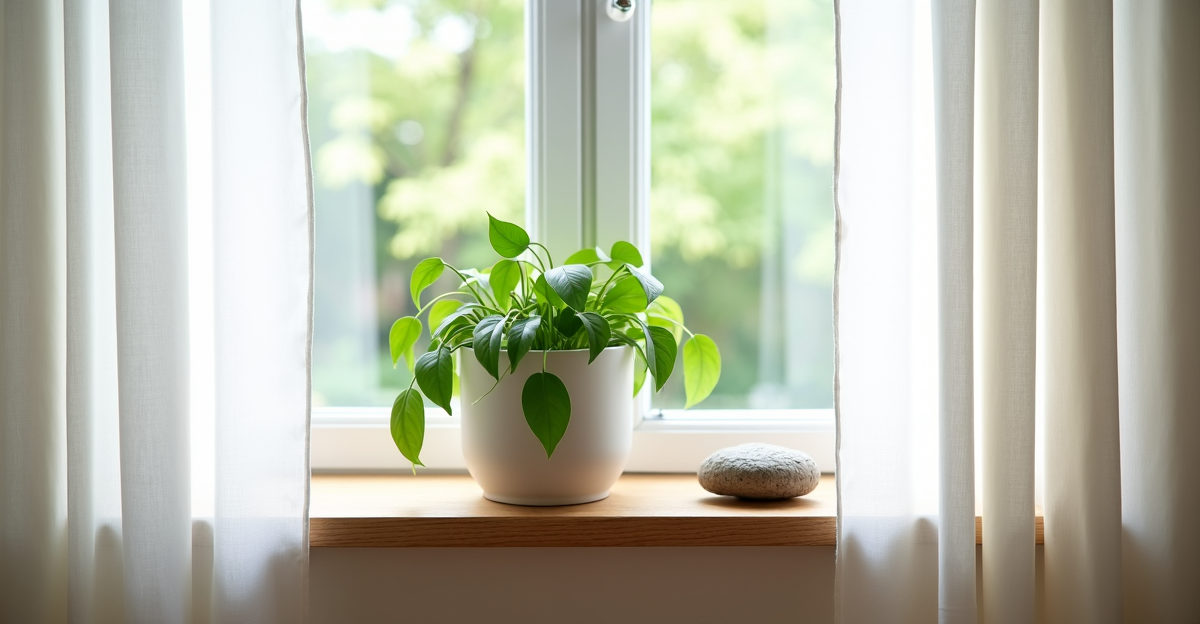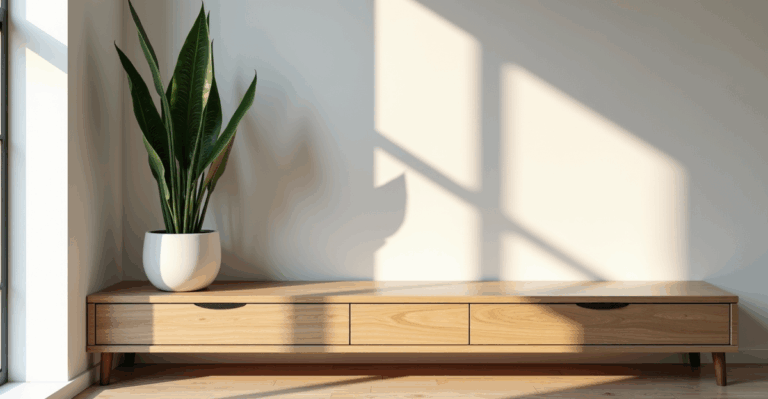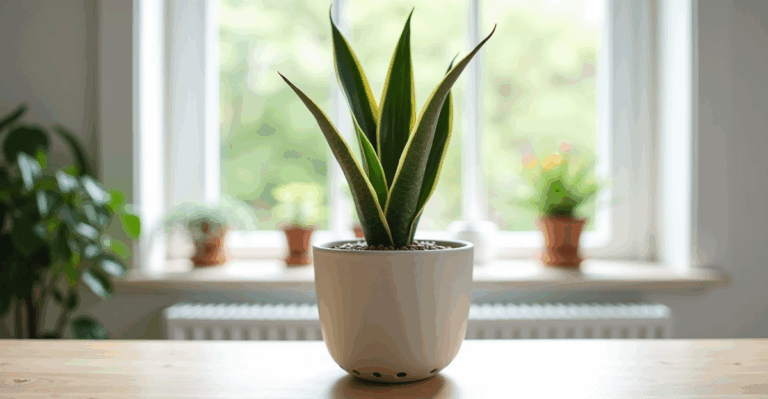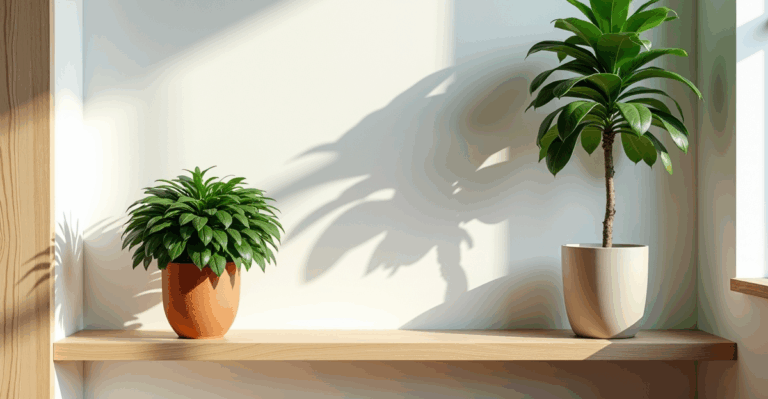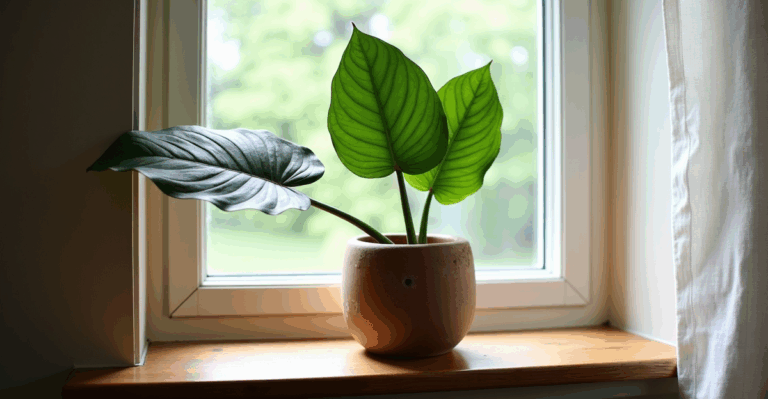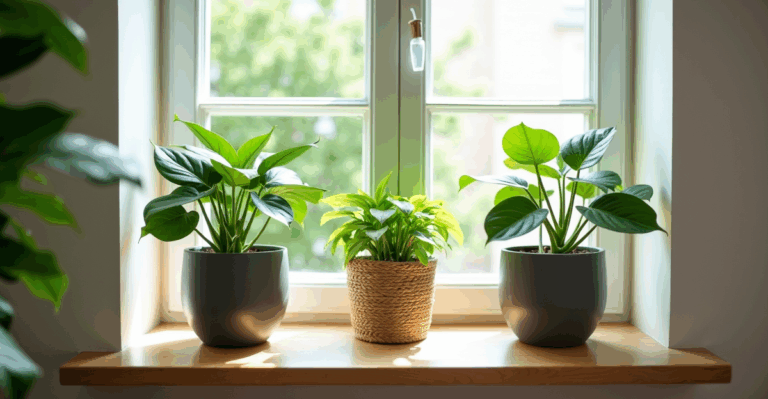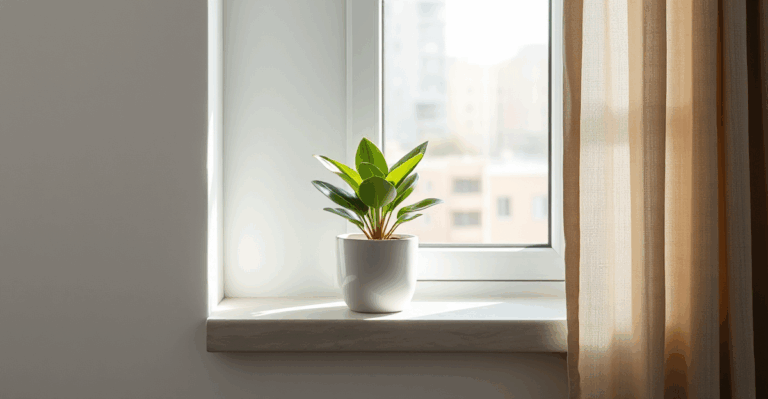The North Window Secret: How Pothos Thrives (and Stays Pet-Safe) in Low Light
You’re staring at that north-facing window in your bedroom or home office, the one that gets soft, consistent light but never a direct sunbeam. You’ve tried a few plants that died, and now you’re eyeing that vibrant, trailing pothos you saw at the store—if only it could handle the dimness. Then you remember: your cat, Miso, has a habit of nibbling on anything green. You pause. Is pothos actually safe? And can it really live here without turning into a sad, leggy vine?
We’ve all been there. North light is often misunderstood—it’s not “no light,” it’s just different light. And pet safety is a real concern, not just a trend. The good news? Pothos is one of the most forgiving, pet-safe (non-toxic to cats/dogs) vines out there, and it thrives in exactly this kind of environment when you understand its needs. Forget the myth that low light means death for your plants—let’s make your north window a haven.
Why North Light Isn’t a Dealbreaker (It’s Actually Ideal for Pothos)
Most people think “low light” means “no light,” but north-facing windows (especially in northern hemisphere homes) provide bright indirect light for most of the day—perfect for pothos. Unlike south-facing windows that blast intense sun (causing scorch), or east-facing ones that get harsh morning light, north light is gentle and consistent. It’s the equivalent of a shady forest floor where pothos naturally grows.
The real pitfall? Overwatering. In low light, your pothos uses water much slower. If you water on a schedule (like “every Sunday”), you’ll drown it. The key is letting the top 2–3 inches of soil dry out between waterings. Check it with your finger—it’s that simple. In winter, when your home heating dries the air and light dims further, you might only need to water once a month. In spring, as light increases, you’ll water more frequently.
Mini-Scenario: Our friend Maya had a pothos in her north bedroom. She watered it weekly like her sunroom ferns, and within weeks, the leaves turned yellow and mushy. Solution: She stopped the schedule, waited for the soil to dry, and now her pothos is lush and trailing happily. Her cat, Pip, just loves watching it swing.
Pet-Safe Styling: Because Your Cat’s Curiosity is Real
Pothos is non-toxic to cats and dogs (according to the ASPCA), so you can keep it in your living space. But—and this is crucial—leaves are still small, leafy, and dangling. Cats love to bat them, and if a vine gets tangled around a cat’s neck, it’s a hazard. Never place a pothos where it’s easily accessible to a cat’s paws or nose.
Styling fix: Hang it high or place it on a shelf out of reach. Use a 3D-printed planter with a tall, narrow profile—it naturally lifts the plant off the surface and keeps the vines flowing downward safely. The planter’s shape also means the roots aren’t crowded, reducing soil splash that might attract cat attention.
Edge Case: If you have a very young or curious kitten, even high placement might not be enough. Pair it with a physical barrier like a low bookshelf or a sturdy wall-mounted plant holder. It’s not about hiding the plant—it’s about making it uninviting for a cat to interact with.
Styling Beyond the Basic Pot: Making Low Light Shine
A plain plastic pot won’t do. Pothos wants to drape and spill, so your container should support that movement. North light is dim, so your display needs texture and contrast to feel intentional, not sparse.
What works:
– Tall, narrow planters (like our 3D-printed options) let vines cascade vertically, creating drama against a window.
– Mix with other low-light plants (like heartleaf philodendron or snake plant) for layered texture. Avoid glossy-leaved plants—your north light won’t highlight them.
– Use a light-colored cachepot (like pale ceramic or woven fiber) to reflect light and make the space feel airier. Never use a dark, non-breathable cachepot—trapped humidity = root rot.
Real-Life Tip: We styled a north window in a client’s hallway using three pothos in different 3D-printed planters (one tall, one wide, one curved). The contrast of shapes made the window feel dynamic, even in low light. The planters’ smooth finishes also meant they didn’t collect dust like rough terracotta, keeping the space clean.
Watering Wisdom: Avoiding the Low-Light Trap
In low light, overwatering is the #1 killer for pothos. Here’s how to get it right:
- Check soil moisture (not the calendar). Stick your finger 2–3 inches deep. If it’s dry, water. If damp, wait.
- Water thoroughly until it drains out the bottom (never let it sit in water).
- Flush the pot every 2–3 months to reduce mineral buildup from tap water (especially in hard-water areas). Run water through the soil for 2 minutes.
- Adjust for seasons: Less water in winter, more in spring/summer when light increases.
Trade-off Alert: If your pothos is very leggy (long stems with few leaves), it’s likely not getting enough light or you’re under-watering. Boost light first (move closer to the window, use a grow light for 2–3 hours daily), then adjust watering.
The 3D-Printed Planter Advantage: Why It’s the Perfect Fit
Why go beyond standard pots for your north-facing pothos? Because standard pots often fail your plant and your style.
- Weight: Heavy ceramic or stone pots in low light mean you’ll neglect to water them (because lifting them is a chore). Our 3D-printed planters are lightweight—easy to move for cleaning or adjusting light.
- Shape: They’re designed to enhance a trailing plant’s movement (like a gentle curve or a tapered base), not just hold soil. This makes the vine look intentional, not just “hanging out.”
- Drainage: Unlike self-watering pots (which often hold too much water for low-light pothos), our 3D designs have perfect drainage holes and a built-in tray for easy cleanup.
- Finish: Smooth, modern textures (not porous clay) mean less dust and a clean look that matches any decor—no more “plant pot” vibes.
Why this matters for north light: The right planter helps you see your plant’s health (dry soil shows clearly) and makes care easier. When you know how much to water, you avoid the common low-light trap. Plus, the shape makes the vine look designed, not just grown.
When It’s Not Working: Troubleshooting Your North Window Pothos
Problem: Leaves turning yellow at the base (not just the tips).
Why: Overwatering in low light. Roots are sitting in moisture.
Fix: Check soil dryness, reduce watering, and if roots are mushy, repot in fresh, well-draining soil (coco coir + perlite works well).
Problem: Tiny white flies or sticky leaves.
Why: Fungus gnats (from overwatering) or mealybugs (from dry air).
Fix: Let soil dry completely, wipe leaves with diluted rubbing alcohol, and avoid misting (low light = slow drying = mold risk).
Problem: Stems growing super long with no leaves.
Why: Too little light or not enough nutrients (rare in low light).
Fix: Move the plant closer to the window (if possible), or add a small, bright LED grow light for 3–4 hours a day. Don’t over-fertilize—low light means plants absorb less.
The North Window Is Your Best Friend (Not Your Enemy)
That north-facing window isn’t a weakness—it’s a gift. It’s the perfect spot for pothos to thrive because it’s gentle, consistent, and forgiving. You don’t need to fight the light; you just need to work with it. Pair that with pet-safe placement and a planter designed for low-light care, and you’ve got a plant that’s not just surviving—it’s growing beautifully.
We’ve seen pothos in north windows transform from sad, leggy vines into lush, trailing pieces of art. It’s all about understanding the light, respecting the plant’s needs, and choosing tools that make the care easy—not a chore. And because we’ve been there (with our own north windows and curious cats), we built planters that fit these realities perfectly.
When you’re ready to grow your setup, explore our 3D-printed planters.

